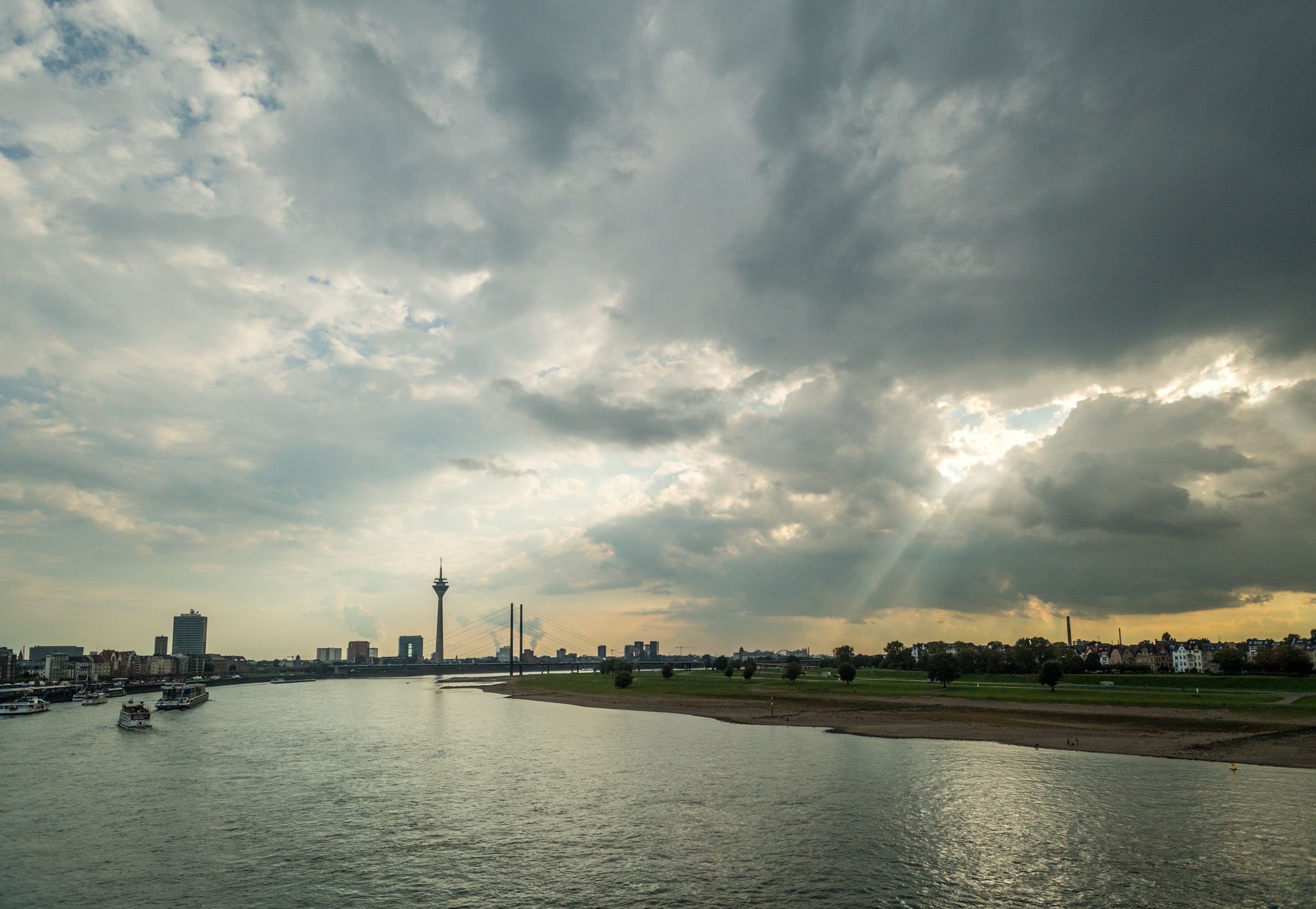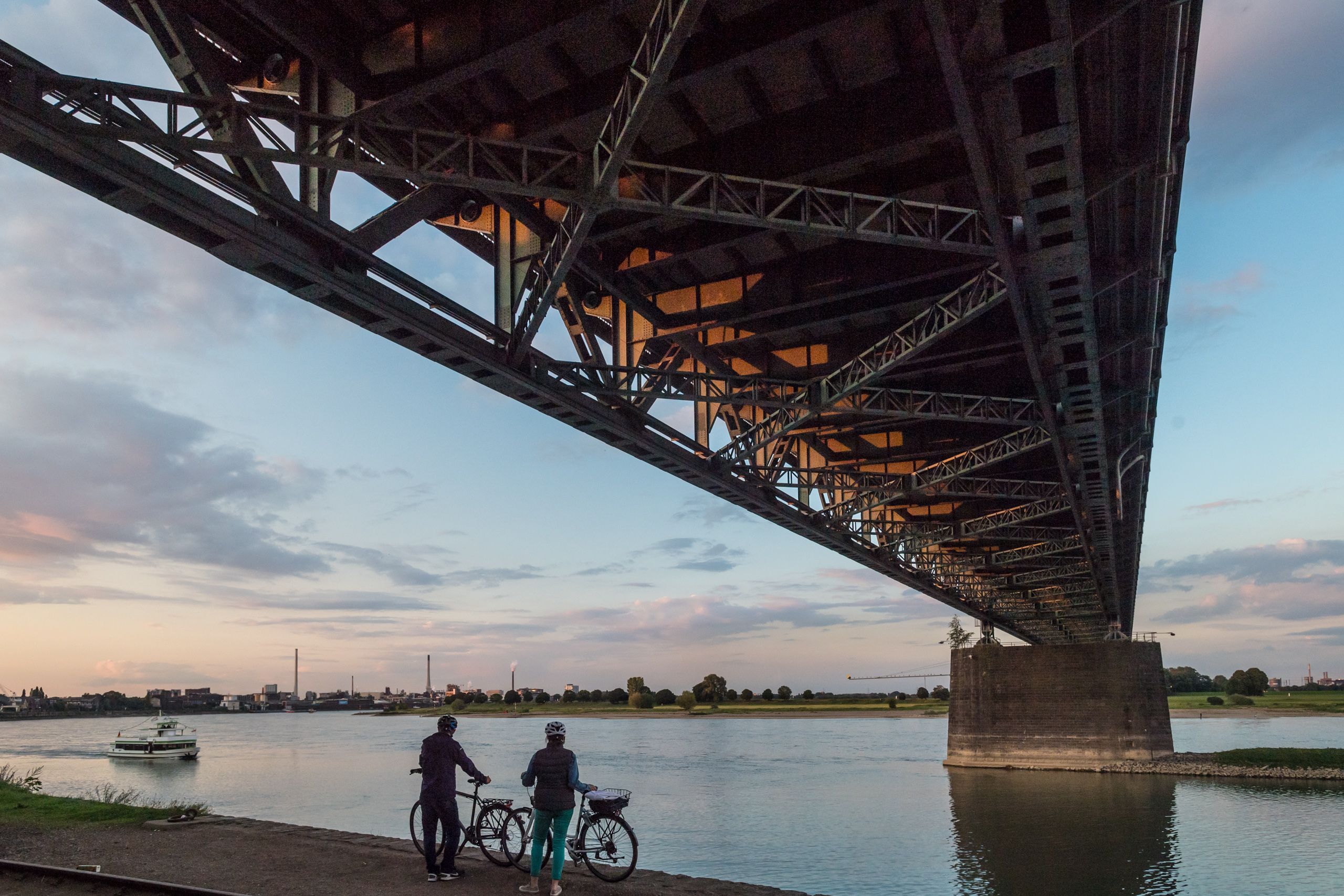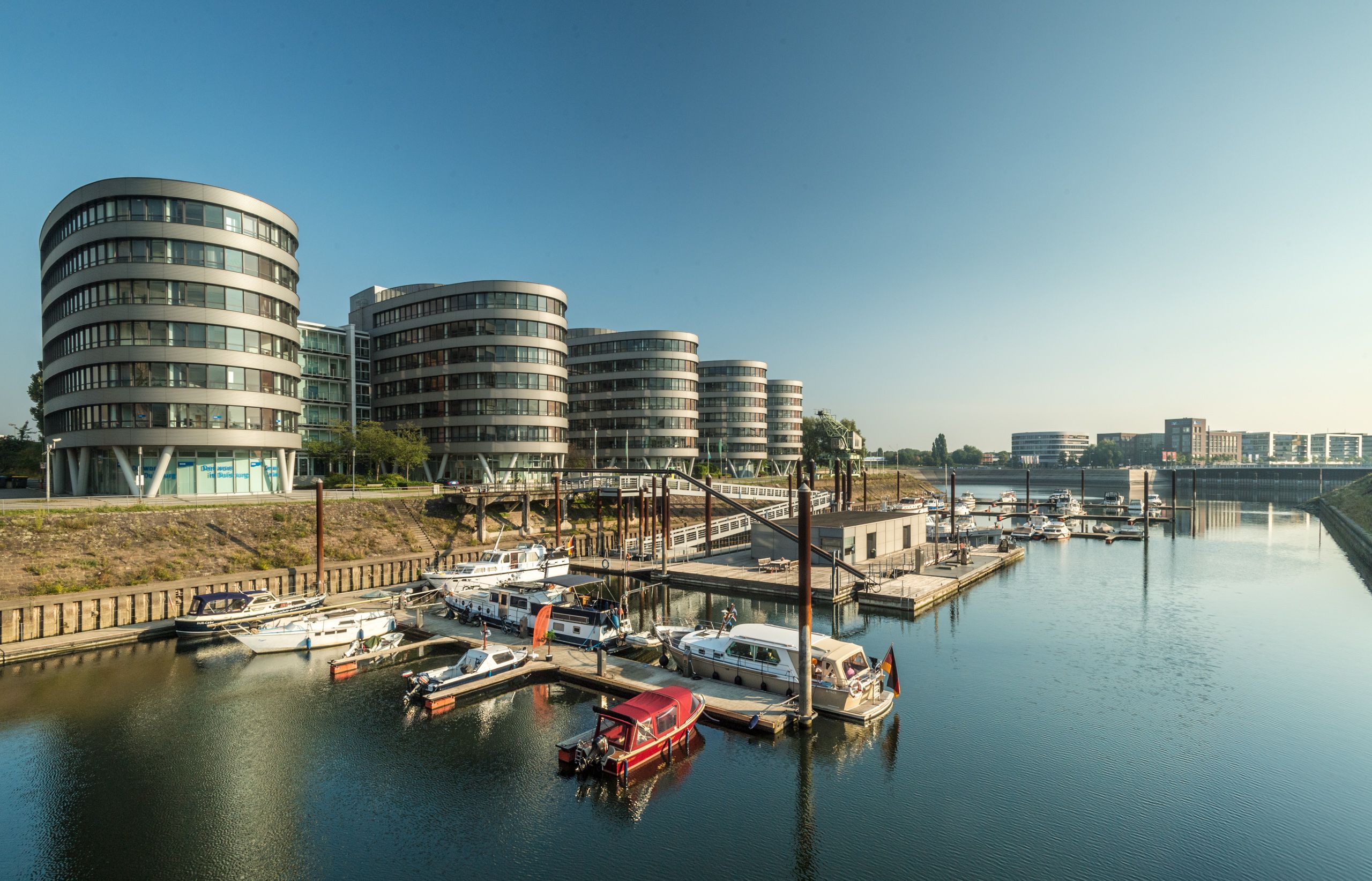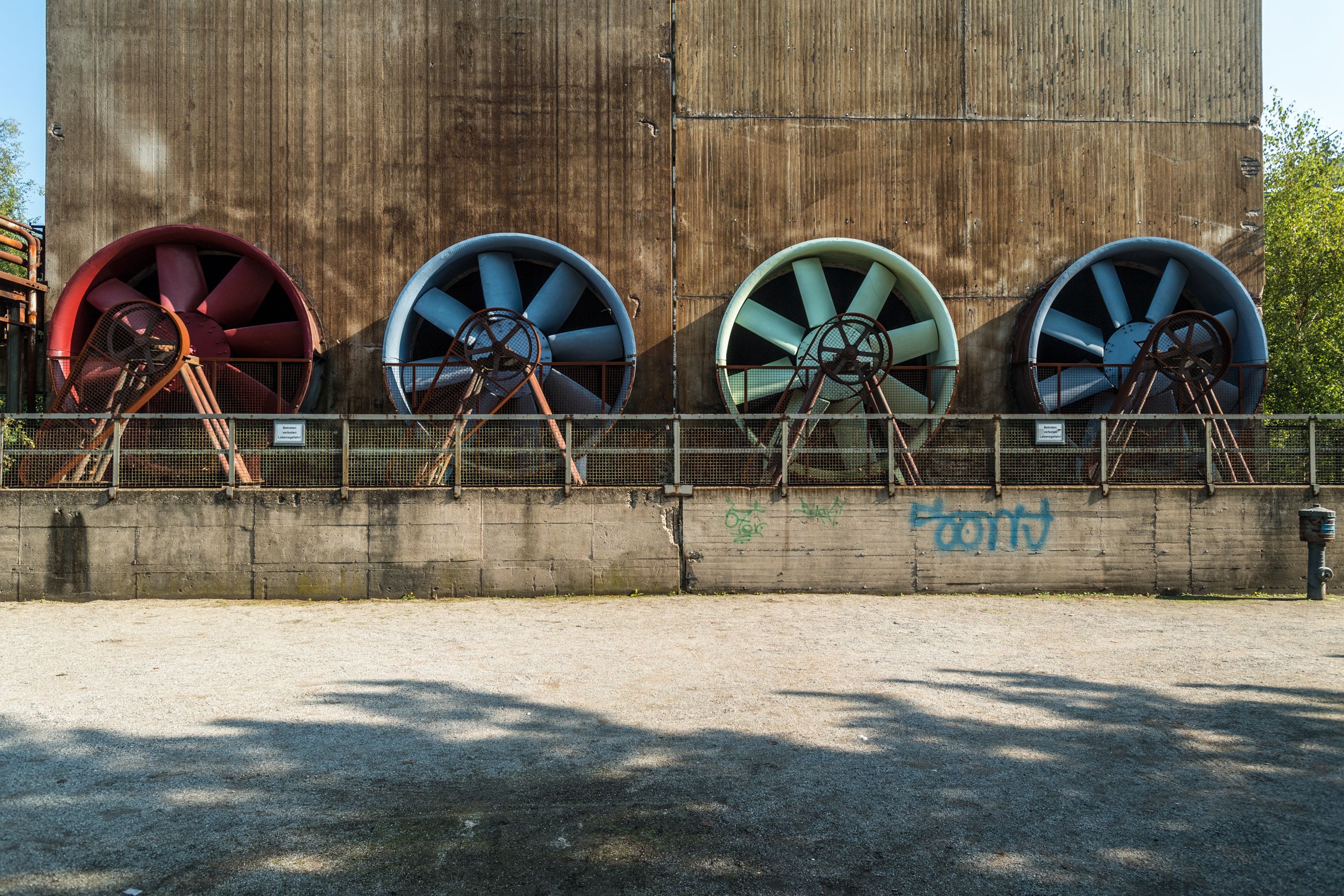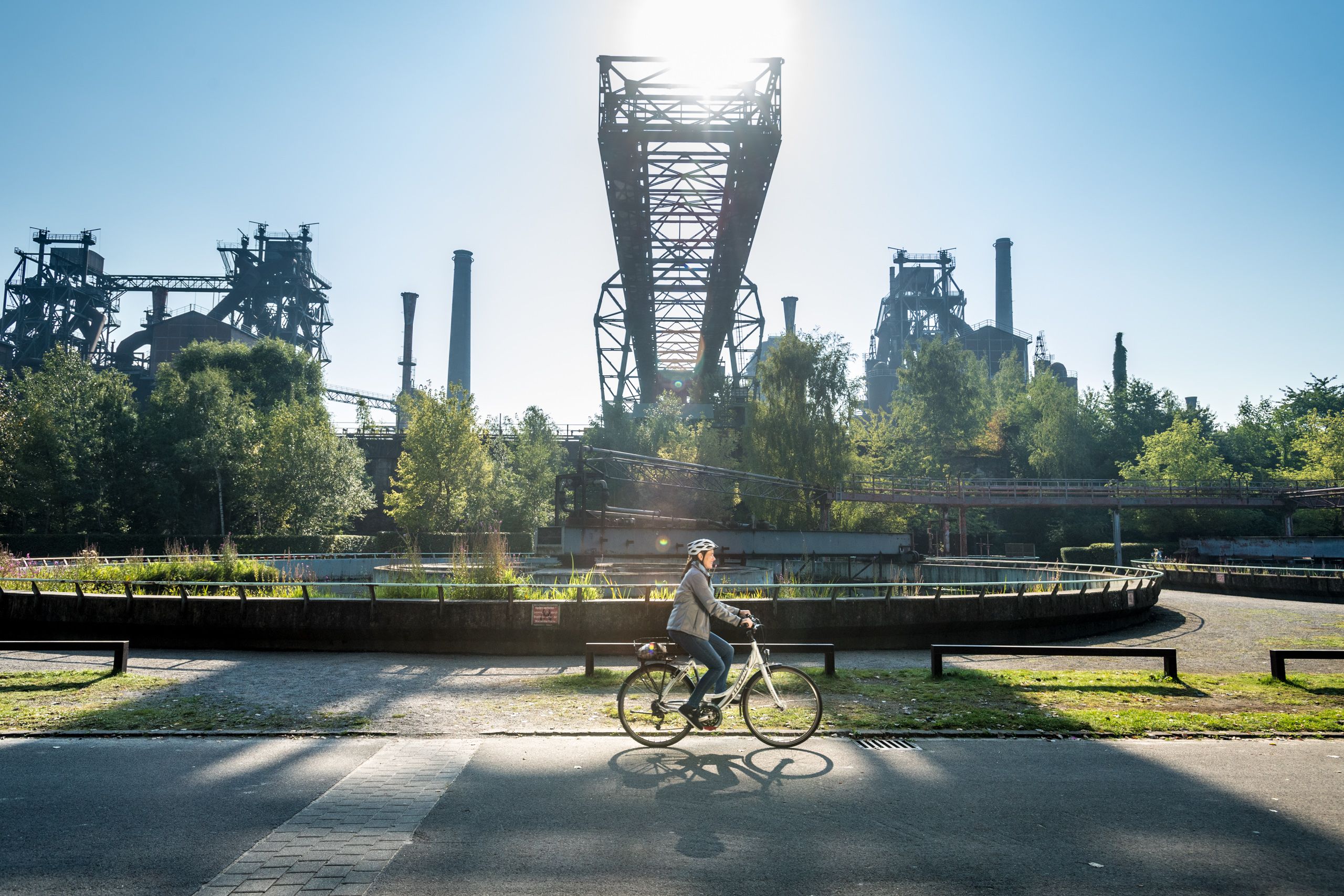The sections on this part of the Rhine Cycle Route are relatively short. There is plenty of time to look around to the right and left, stop in between and take a closer look at the highlights along the way. One of these worthwhile stops is the Museum Insel Hombroich in Neuss. Here, works of art have found their place on wide meadows, between old trees and watercourses. Visitors can find their own paths to ten accessible architectural works of art on the extensive grounds.
If you want to swap your bike for skis in between, you can make a stop at the indoor ski slope in Neuss. The Neuss glacier offers excellent slope conditions for skiers and snowboarders 365 days a year.
Luxurious shopping and rustic breweries
Cyclists can experience a wealth of art and architecture during a break in the cultural metropolis of Düsseldorf: Sit on the banks of the Rhine, admire the architectural uniqueness of the Media Harbour or enjoy a view of the city and surrounding area from a height of 172 meters atop the Rhine Tower. In the historic center of Düsseldorf, the Altstadt, around 260 pubs, breweries and nightclubs attract visitors to the "longest bar in the world". Classic modern and contemporary art can be found in the K20, K21 and F3 Schmela Haus. The NRW Art Collection exhibits works by Pablo Picasso, Henri Matisse and Wassily Kandinski and is one of the most renowned collections of modern art. If you still have room for shopping bags on your bike, you can go shopping on Königsallee, the luxury mile on the Rhine, at Gucci, Armani and Chanel. Strolling around and looking at the shop windows is also a pleasure. But it's not just the "Kö" that is pompous - Benrath Palace is considered Düsseldorf's most important architectural work of art. Cyclists can enjoy a break away from the hustle and bustle of the city in the English garden with its rare trees and the French garden with its water features and flowerbeds, before continuing along the Rhine towards Krefeld.
Bauhaus architecture and historic town centers
On the left bank of the Rhine, the route continues along dykes and the banks of the Rhine towards Krefeld. If you want to take a break in between, you can enjoy an ice cream in Langst-Kierst directly on the Rhine and take the ferry to Düsseldorf-Kaiserswerth: There are quaint beer gardens and small cafés in the historic town center. If you drive straight through to Krefeld, you should make a stop at one of the art museums in the city: Haus Esters and Haus Lange offer Bauhaus architecture by Mies van der Rohe from the 1920s. And in the Kaiser Wilhelm Museum, visitors can marvel at a collection comprising around 14,000 works from the fields of painting, sculpture, graphic art, photography and new media.
The medieval Linn Castle in the historic town center of Linn is particularly romantic and somewhat quieter. The castle, a hunting lodge and an archaeological museum give visitors an insight into life on the Lower Rhine in different centuries. Cyclists can enjoy a coffee or an ice cream during a break in the small alleyways in the center of Linn.
Stop at the largest inland port in the world
From Krefeld, the route crosses the Rhine to Duisburg. Where grain was once stored and milled, tired cyclists can now enjoy a cappuccino with a view of the water: Duisburg's inner harbor brings a Mediterranean flair to the city. The old harbor area is a particularly attractive urban quarter, with three daily boat trips departing from here through the Port of Duisburg, the largest inland port in the world.
Experience nature against a breathtaking industrial backdrop in the Duisburg-Nord Landscape Park. At its center is a disused ironworks, which is illuminated in red, green and blue as dusk falls. Those with a head for heights can enjoy a breathtaking view over the Ruhr region from the blast furnace.
